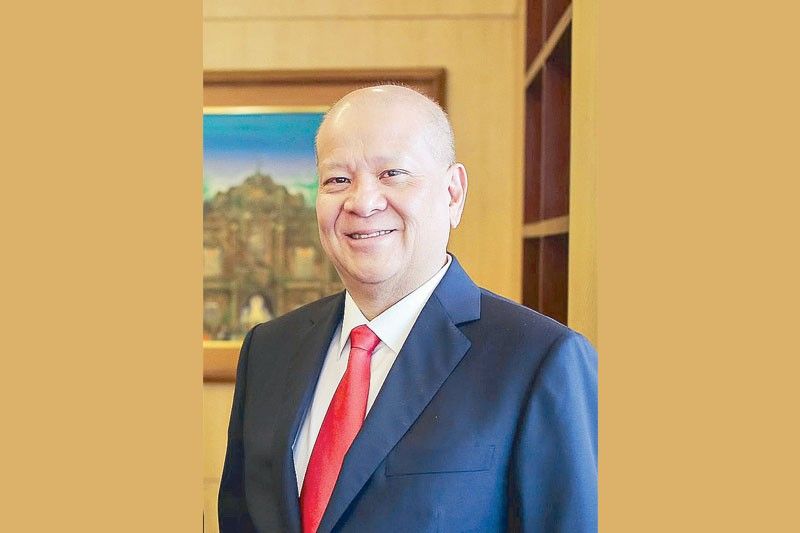RSA allays last-minute NAIA review


On Thursday, Feb. 15, Transportation Secretary Jaime Bautista was worried and feeling sick, even feverish, according to sources, from the growing speculation and intrigue regarding the awarding of the estimated P170.6-billion solicited proposal to rehabilitate the Ninoy Aquino International Airport (NAIA), fearful that his long dream of finally accomplishing the privatization and much need rehabilitation of NAIA may once more be derailed.
As per a published schedule of the Bids and Awards Committee, the Notice of Award would be announced on that day, and Philippine STAR columnist Tony Lopez was confident enough to already announce that the SMC-SAP Consortium would be awarded the contract based on its bold offer of an 82.16 percent share of future gross revenues to the national government, excluding terminal fees.
However, there were questions about the financial capability of the SMC-SAP Consortium which comprised SMC Holdings as lead member with 33 percent and its two partners – RMM Asian Logistics Inc. with 30 percent, RLW Aviation Development with 27 percent and Incheon International Airport Corp. with a 10 percent stake, but which would be providing the expertise on operations and maintenance.
More clarifications
According to sources privy to the privatization process, the BAC and its technical adviser, the Asian Development Bank, still wanted a few more clarifications from the SMC Consortium regarding its financial capability, construction and development cost, specifically its projection of just $1,600 per square meters compared to the international benchmark cost of $3,000, citing as example the cost for the Dubai and Doha airports.
There were also questions on the higher maintenance cost projections of the SMC-led Consortium compared to those submitted by another group.
Ramon Ang quickly clarified that the goal of their rehabilitation of the NAIA “is to just make it a functional airport.” Furthermore, he pointed out, they already have their own equipment as they have also started construction work on the more ambitious P740-billion Bulacan international airport project that, with its planned six runways and much larger terminal and facilities, would eventually become the Philippines’ main international gateway.
Per Ang’s projection, the maximum passenger capacity of NAIA would only be up to 60 million, even as his plans include the extension of Terminal 2, which he had already been envisioning when he was still with Philippine Airlines.
The biggest factor that finally answered the remaining questions of the BAC committee, sources said, was the presentation of the documents of financial support from the Sy-led BDO of up to P120 billion. Tessie Sy-Coson had reportedly been asked to join the consortium, but she declined, preferring to offer financial support instead.
Thus, by Friday morning, a visibly more relieved Sec. Bautista and members of the BAC were finally ready to announce the decision to issue the Notice of Award to the SMC-SAP Consortium, which would assure the government of up to P900 billion in revenues over an initial 15 years, with the option of another 10-year extension.
Before the announcement of the award was made, though, Sec. Bautista, as a courtesy, called each of the members of the competing consortiums to inform them of the decision of the BAC.
SMC’s ROI
What is remarkable, however, of the SMC Consortium’s offer, sources admiringly admitted, is that while most aim for at least a 15 percent return on investment or ROI, a stress test of the consortium’s financial projection showed its ROI would be a low eight percent, clearly indicating RSA’s commitment to help the nation and not just earn a profit for himself and the consortium members.
Additionally, sources also pointed out that RSA’s other businesses would greatly benefit from the NAIA deal, such as Petron and his infra and tollways business, and his food and beverage business.
During the final meeting before the decision to award the contract, RSA had impressed the BAC and ADB on his vision and financial acumen with regards to his previous projects, particularly the NAIA Expressway that he had aggressively bid for and for which he paid an P11 billion upfront payment.
Based on RSA’s initial calculations, SMC Infrastructure had initially projected vehicle usage of between 30,000 and 60,000 a day, but is now registering usage of up to 75,000 a day, prompting plans for further access points and extension.
Likewise, RSA had explained how he carefully calculated construction cost for the expressway, which the DPWH had projected at P45 billion, but based on his own calculation could be built at a cost of just P30 billion, allowing for a P15 billion difference that prompted the bold tycoon to pass on P11 billion to the government immediately as upfront payment, while still allowing him a P4 billion savings.
Per the DOTr timetable, signing of the NAIA rehab contract would be in 30 days, upon which the SMC consortium would immediately pay the government P30 billion. Financial closing, however, could take up to six months, sources explained, as the SMC Consortium would still have to create a special purpose company that would be the operator of NAIA.
Secretary Bautista is keen though, sources said, on speeding up the process and completing the NAIA turnover in three months so that he can move on to other airport privatization projects, such as the Laguindingan Airport in Northern Mindanao that serves Cagayan de Oro, Iligan, and Marawi, as well as the provinces of Misamis Oriental, Lanao del Norte, and Bukidnon.
- Latest
- Trending





























